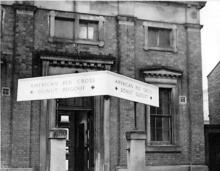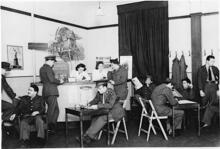The origins of Methodism in Lytham started from a cottage in Bath Street which was a licensed preaching house. In 1846 a chapel which could accommodate 200 worshippers was built in Bath Street by T.C. Hincksman but by 1868 this was not large enough to hold all the summer visitors and it was replaced in 1868 by much large premises on Park St.
It was subsequently used as the first Lytham Institute, a Masonic hall, an auction saleroom, an American Forces cafe, a health clinic and is now a solicitor's offices.
Former Methodist Chapel, Bath Street
This was the first Wesleyan chapel in what had been a largely Catholic community, reflecting the influence of incomers. It is dated 1846, was funded largely by Thomas Crouch Hincksman, a Preston cotton spinner, and opened in 1847. The chapel is built of red brick in Flemish bond with sandstone dressings, and it has a slate roof. There are original windows to the front and, inside, the gallery stairs remain.
A Sunday school was added at the rear, but the building was still too small for the growing town and a new chapel was built in Park Street in 1868. The old chapel then became briefly a Masonic Hall, Lytham Institute, a coffee tavern, and, later, Wilson’s Auction Rooms. During the 1939-45 war it was a ‘Do-nut Dugout’ for American forces, complete with paintings of Mickey Mouse. Post World War II it was an NHS clinic, and is now a solicitors’ office.
from "The listed buildings of Lytham St. Annes" - Lytham St. Annes Civic Society 2003
If you have additional information or pictures that may usefully added to this page then please get in touch with us.


